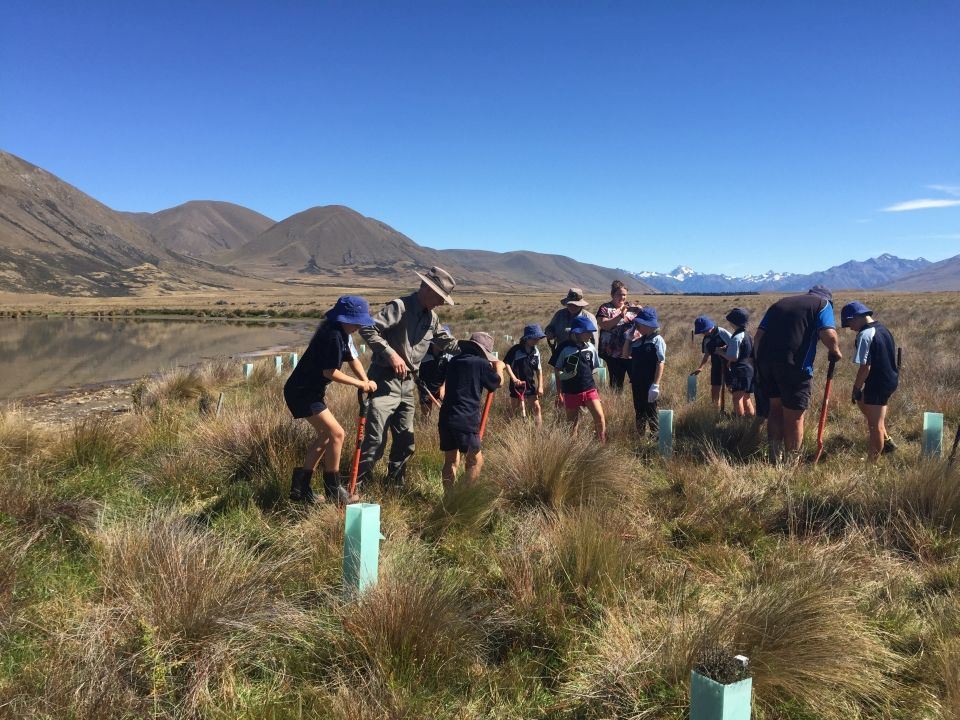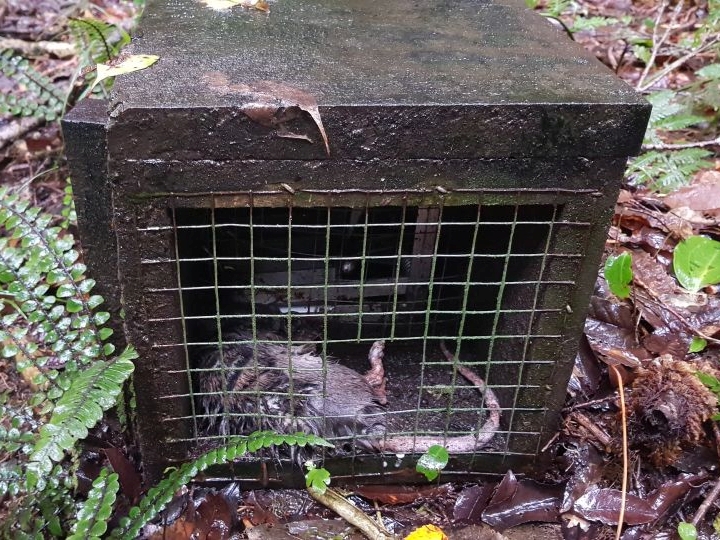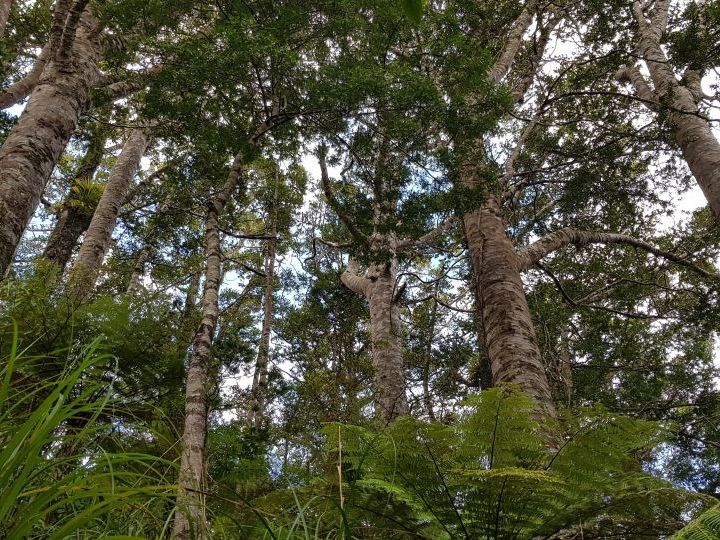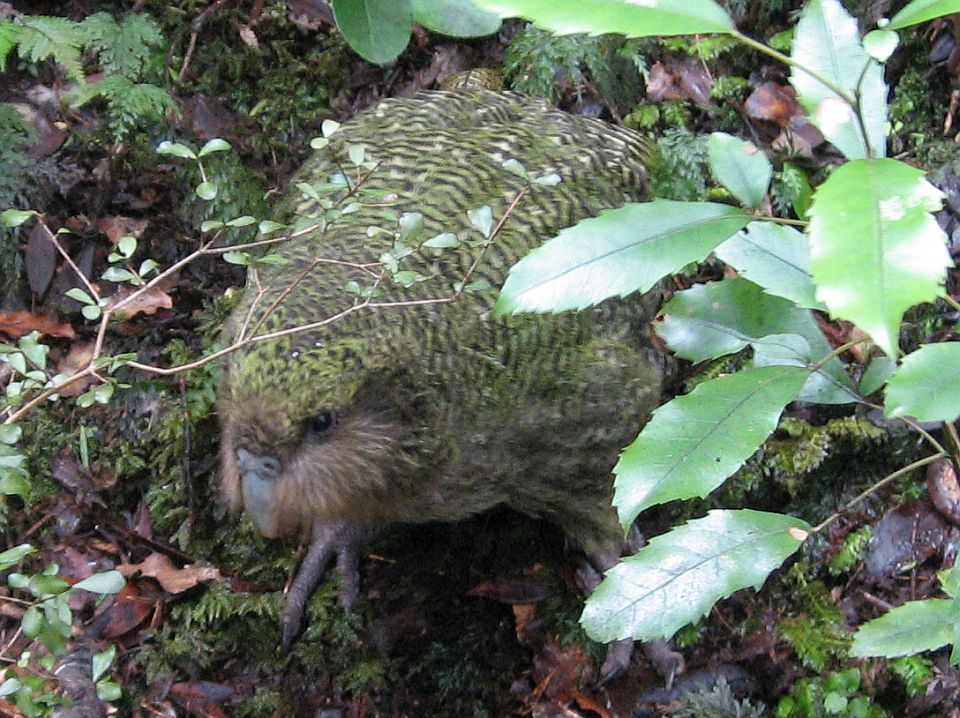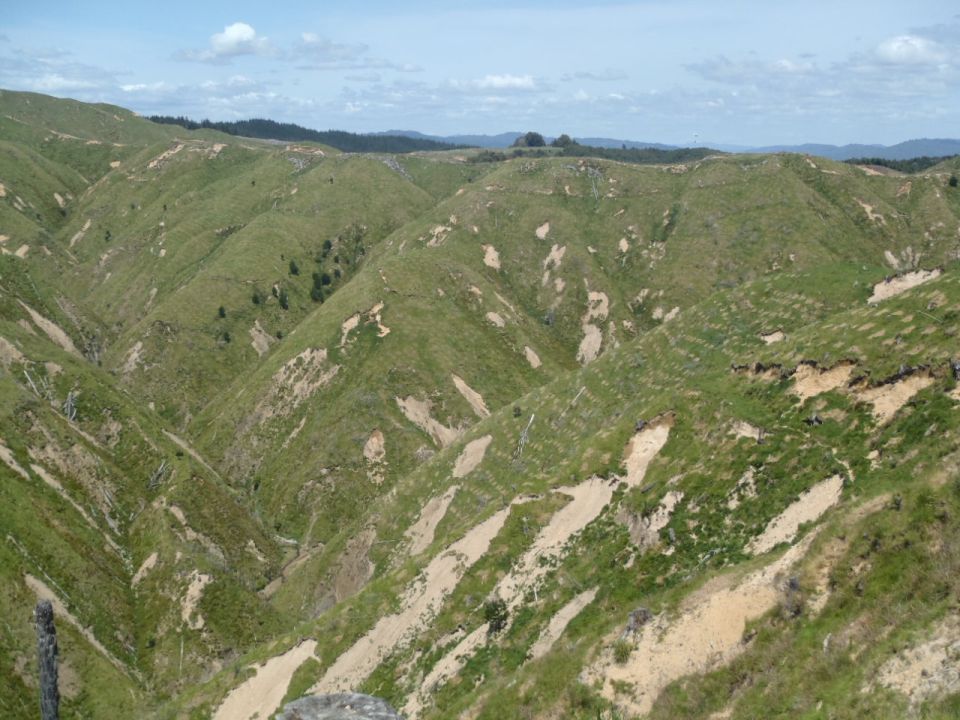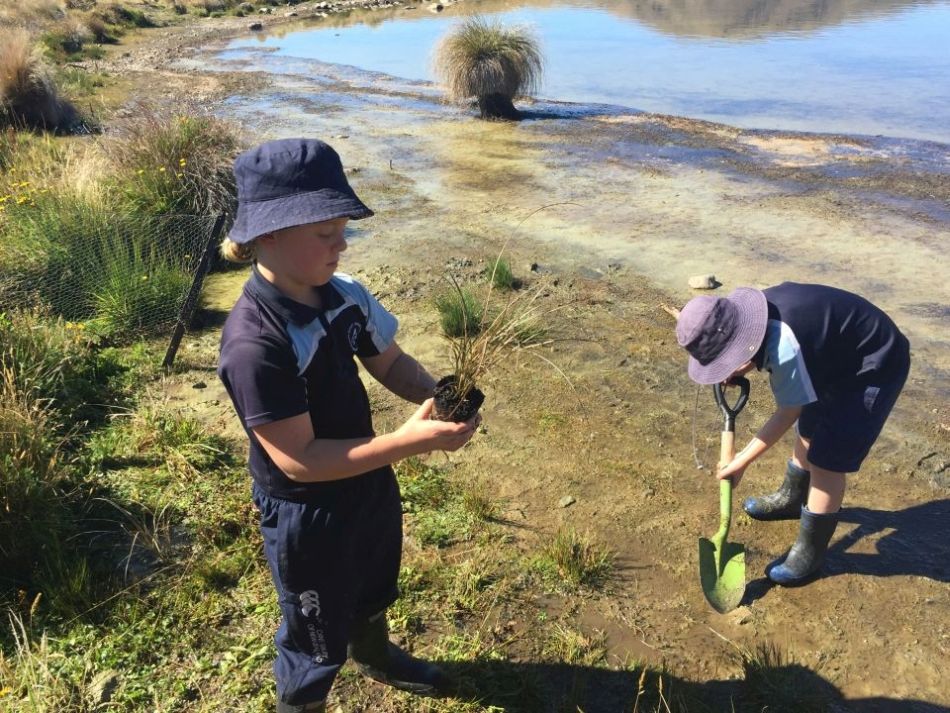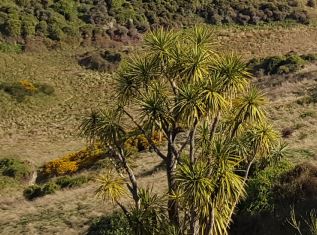What is ecological restoration?
- Ecology is all about living things and how they interact with each other and their surroundings.
- Restoration is about helping something that has been damaged, degraded, or destroyed.
Ecological restoration, therefore, is assisting damaged or destroyed ecosystems. It usually involves bringing back lost plant and animal species that are found naturally in an area. This is known as restoring native and endemic biodiversity.
As well as adding something back to an ecosystem, ecological restoration may also involve taking something away. This usually means removing unwanted plants and animals – known as weeds and pests.
What is an ecosystem?
An ecosystem is made up of living things like animals, plants, fungi and bacteria, as well as the environment they live in. Because living things respond to and are influenced by their environment, it is important to look at all parts to get a full picture.
What makes up an ecosystem?
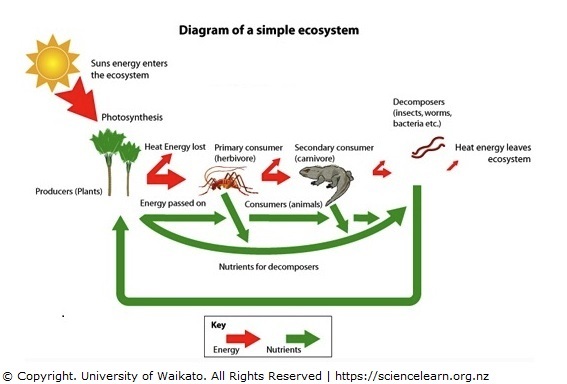
Image: Science Learning Hub, University of Waikato, www.sciencelearn.org.nz.
An ecosystem must contain producers, consumers, decomposers, and dead and inorganic matter. All ecosystems require energy from an external source – this is usually the sun. Plants need sunlight to photosynthesise and produce glucose, providing an energy source for other organisms. The living organisms in an ecosystem can be described as producers, consumers and decomposers.
- Producers make food from inorganic matter. (Plants are producers – they make sugar through photosynthesis – they use sunlight, water and carbon dioxide to produce food.)
- Consumers eat producers – they are unable to make their own food and so must eat other plants and animals. (All animals are consumers.)
- Decomposers break down dead matter – these may be bacteria or animals that feed off dead plants and animals. This process releases nutrients for producers to use as they make new food.
- Inorganic matter is what non-living things are made from. These are things like air, water, rocks, soil and metals. Inorganic matter is important in an ecosystem because it is what producers use, and it is the physical and chemical, non-living environment that we live in.
Watch this Youtube video: Understanding Ecosystems for Kids: Producers, Consumers, Decomposers.
Why is knowing about ecosystems important?
The interactions going on are all linked, and they can get very complex. Anything that impacts on one aspect of the ecosystem will, in turn, impact on others. Unfortunately, humans often do things that result in disrupting an ecosystem, and even though their actions may seem small, they can have large effects.
What is biodiversity?
Biodiversity is short for biological diversity. It is the number and variety of living things found within a certain area. When we talk about biodiversity we generally think about the individual birds, plants, fish, insects and other species that are special to New Zealand - our native and endemic biodiversity.
Native or endemic?
New Zealand has many endemic species – species that are unique to a place and not found anywhere else. This is not the same as being ‘native’. A species is native if it is naturally found in a location, but it may be found in more than one country. For example, the pūkeko is a native species in New Zealand, Europe, India and Asia, but the kākā is endemic to New Zealand. The mānuka shrub is native to both New Zealand and Australia, but the pōhutukawa is endemic to New Zealand.
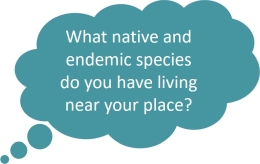
Why is biodiversity important?
Our biodiversity provides life supporting systems. These systems enable all organisms, including humans, to survive. They provide resources and services, such as clean air and water, fertile soils, pollution and flood control. Other benefits include recreation, aesthetic, scientific, education, cultural values, and a sense of identity.
New Zealand's biodiversity has many unique features. Many species are found nowhere else in the world. This makes New Zealand’s biodiversity both special and highly vulnerable. If these species are lost to New Zealand, they are lost to the world.
What happened to our natural ecosystems?
New Zealand’s ecosystems used to be able to handle a lot. But people have made many changes to the landscape over time. New Zealand was one of the last places on earth to be settled by humans, but it has one of the worst records of native biodiversity loss.

Land clearance, burning and felling forests, draining wetlands, building towns and cities, introduced plants and animals, over-exploitation of resources and pollution, have damaged these ecosystems and affected our biodiversity. In addition, the effects of climate change, with more extreme events, is further impacting our biodiversity. For example:
- 21% of birds are now extinct.
- 63% of freshwater fish are either threatened with extinction or declining.
- About two-thirds of the original native forests has been lost.
- Wetlands have been reduced by 90%.
- Soils have become degraded.
- Sediment and nutrient status of many rivers and lakes has deteriorated.
- Invasive pests (plants, animals, fungi, micro-organisms) have changed natural ecosystems.
Now, even small changes to an ecosystem such as climate change, can have a big effect on our native biodiversity. Giving nature a helping hand through restoration will help our ecosystems grow strong and resilient again. They will be better able to help themselves – and to help us too!

